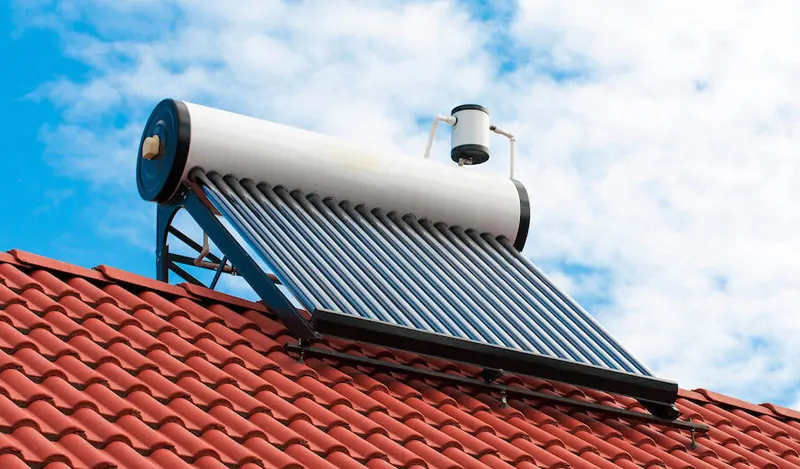Exploring the Science Behind Solar Water Heating Systems

Solar water heating systems are revolutionizing the way we harness renewable energy for everyday needs. By utilizing the power of the sun, these systems provide an efficient and eco-friendly way to heat water for homes and businesses. In this article, we will dive into the science behind solar water heater systems, explaining how they work, the technology behind them, and why they are an excellent choice for energy-conscious individuals.
1. The Basic Concept of Solar Water Heating
At the core of any solar water heating system is the simple concept of converting sunlight into usable heat energy. These systems use solar collectors, often referred to as solar panels, to absorb sunlight. The heat captured by these panels is then transferred to a liquid, typically water or an antifreeze solution, which circulates through the system to a storage tank. The heated liquid then heats the water in the tank, making it ready for use in homes or businesses.
The process starts when sunlight hits the solar collectors, which are designed to maximize the absorption of solar radiation. This absorbed energy is converted into heat and transferred to the circulating fluid. Depending on the type of solar water heater, this fluid may either directly heat the water in the storage tank or indirectly transfer its heat to the water via a heat exchanger.
2. Components of a Solar Water Heating System
A solar water heater typically consists of several key components, each of which plays an essential role in the system’s performance. These components include:
- Solar Collectors: These are the panels that absorb sunlight. There are two main types of collectors: flat-plate collectors and evacuated tube collectors. Both are designed to capture sunlight effectively and convert it into heat.
- Heat Transfer Fluid: This fluid circulates through the system to carry the absorbed heat. In active systems, this fluid is pumped through the collectors and into the storage tank. In passive systems, the heat transfer is driven by natural convection.
- Storage Tank: The storage tank holds the hot water until it’s needed. Insulated to reduce heat loss, this tank stores water that has been heated by the solar energy, ready for use in your home or business.
- Heat Exchanger: In some systems, a heat exchanger is used to transfer the heat from the fluid to the water in the storage tank. This prevents the heat transfer fluid from directly mixing with the water but still allows efficient heating.
- Controller: The controller regulates the flow of the heat transfer fluid, ensuring that the system operates efficiently by maintaining the optimal temperature.
3. The Process of Solar Water Heating
The science behind solar water heating involves the efficient capture and conversion of solar energy. Here’s a breakdown of the process:
- Solar Energy Absorption: The solar collectors absorb sunlight, which is converted into heat energy.
- Heat Transfer: The absorbed heat is transferred to a circulating fluid, which moves through the system’s pipes or tubes.
- Water Heating: The heated fluid either directly or indirectly transfers its heat to the water in the storage tank, raising the water’s temperature to the desired level.
- Hot Water Delivery: Once heated, the water is ready for use in your home or business, typically for showers, washing dishes, or other daily activities.
The system operates most efficiently during sunny days, but modern systems are designed to function even in cloudy conditions, ensuring a consistent supply of hot water.
4. Types of Solar Water Heating Systems
There are two primary types of solar water heating systems: active and passive.
- Active Systems: These systems use pumps and controllers to circulate the heat transfer fluid through the collectors and into the storage tank. Active systems are generally more efficient but are also more complex and expensive to install.
- Passive Systems: These systems rely on natural convection or gravity to circulate the heat transfer fluid. They are simpler, more affordable, and require less maintenance but are usually less efficient than active systems.
Within these two categories, there are also different configurations, such as direct and indirect systems, which determine how the heat transfer fluid interacts with the water.
5. Efficiency and Environmental Benefits
One of the most significant benefits of solar water heaters is their high efficiency. Solar energy is free and abundant, which means once the system is installed, you can heat water at little to no ongoing cost. This can lead to significant savings on energy bills over time.
From an environmental perspective, solar water heaters contribute to reducing carbon emissions and the consumption of non-renewable energy sources. By using the sun’s energy, these systems help mitigate climate change and decrease the demand for fossil fuels.
6. Conclusion
The science behind solar water heater systems is a testament to the power of renewable energy. By harnessing the sun’s energy to heat water, these systems provide an efficient, cost-effective, and environmentally friendly solution for your hot water needs. Understanding how they work allows homeowners and businesses to make informed decisions about adopting solar water heating technology and contributing to a more sustainable future. With advancements in technology, solar water heating systems are becoming even more accessible and efficient, making them an ideal choice for anyone looking to reduce their energy bills and environmental impact.






